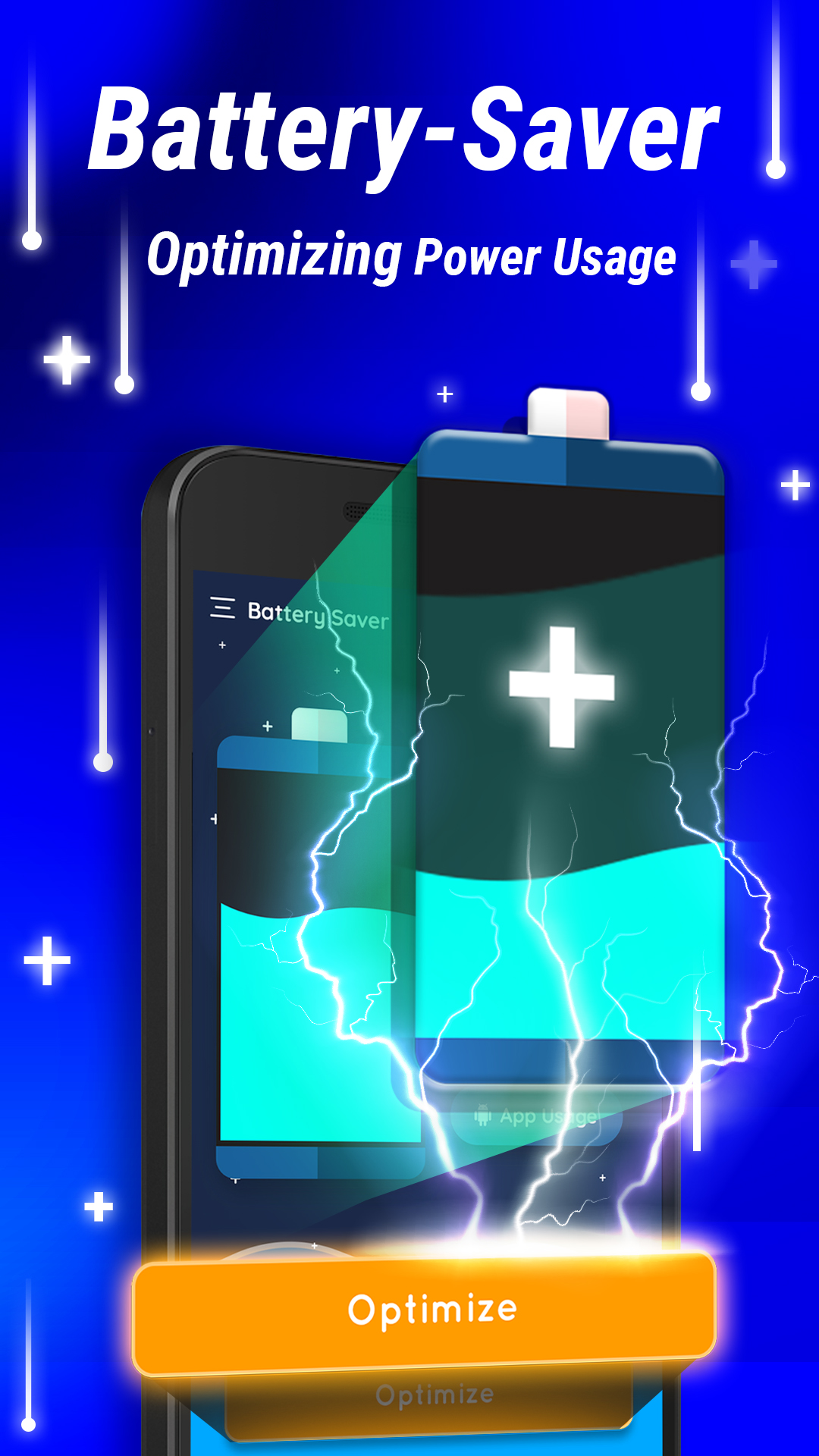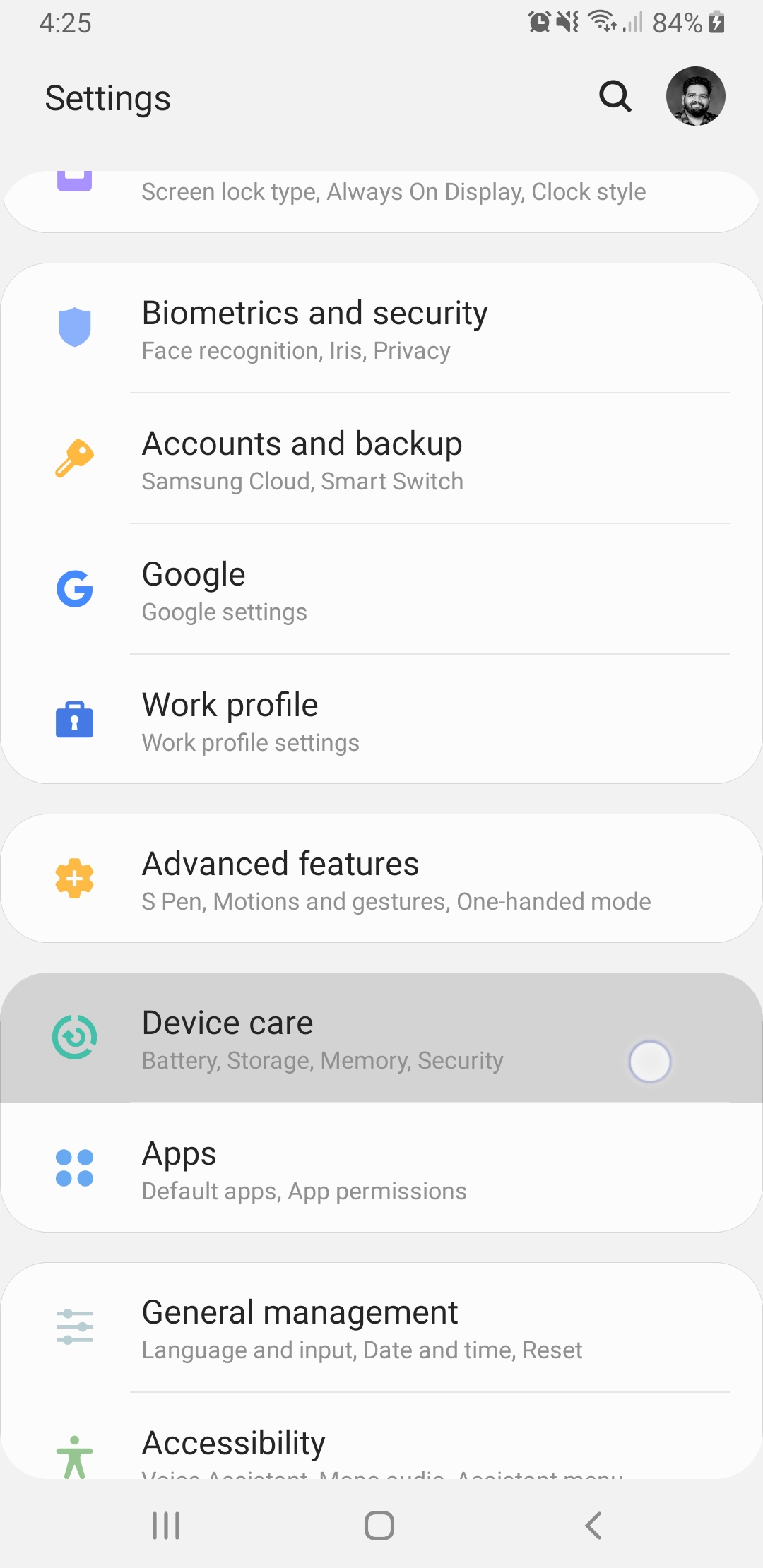'I have a non-jailbroken iPhone with iOS 10 and gmail account. When I found the email caches take so much space on my iPhone memory, I tried to clear email cache by deleting my email account. When I log into my email account again, it turns out that the email caches still occupy much storage on my iPhone without being removed along with the email account. How can I clear email caches on iPhone to free up iPhone space?'
As a cellphone operating system that is not easy to run slowly, iOS offers a good user experience in usual. However, it is inevitable that iPhone/iPad will produce lots of junk files or cache files, such as the email caches, which might take up more and more storage space on your iPhone or iPad. In order to free up storage space on iPhone and speed up iPhone, it is necessary to clear email caches on iPhone. But how to delete email caches from iPhone completely and and effectively? This article offers you 3 methods for your reference.
Method 1. Completely Delete Email Caches on iPhone with 1-Click (Recommended)
Method 2. Reinstall Mail App to Remove Email Caches from iPhone Partly
Method 3. Factory Reset iPhone to Delete Email Caches on iPhone
Method 1. Completely Delete Email Caches on iPhone with 1-Click (Recommended)
This video will teach you how to clear your phone's cache, which can help speed up your phone and clear up memory space.Let's be friends!Facebook: https://ww. Clean Safari cache manually. Regularly keep on clearing your Safari’s History and Data, clear your. The iPhone and iPad tend to slow down as they gradually get clogged up with unwanted files and apps. In this article, we explain how to clean out the cache, junk and memory-clogging files on your. Method 4: Delete Internet Explorer Files to Clear Memory Cache Step 1: First of all, click on the 'Start' button and type 'Internet Explorer' in the text field and press the 'Enter' button. Step 2: Internet Explorer web browser window will appear, you have to click on the 'General' tab at the top of the window.
To completely and permanently clear email caches on iPhone, it is highly recommended to rely on the third-party mail cache cleaning tool for iOS Device - Coolmuster iOS Cleaner for Windows PC (or iOS Cleaner for Mac). As a professional junk file cleaner for iDevices, this Coolmuster iOS Cleaner enables you to completely and permanently delete email caches on iPhone/iPad/iPod without uninstalling Mail app within a few simple steps.
Furthermore, apart from mail cache files, this iOS Cleaner also supports to remove other junk files from iPhone/iPad/iPod, including app caches, app cookies, app temp files, app crash logs, downloaded temp files, photo caches, user storage files, iTunes radio history, etc. This program can automatically scan the junk files on your device and show them in different categories, you can choose the unwanted junk types for cleaning according to your needs. And it is fully compatible with almost all iOS devices in iOS 11/10/9/8/7/6/5, including iPhone X/8 Plus/8/7 Plus/7/6s Plus/6s/6 Plus/6/5S/SE, iPad Pro, the new iPad, iPad Air, iPad 2, iPad mini, iPod touch and etc.
Below are the free trials of the powerful Mail Cache Cleaner program, please download the right version on your computer and start to easily clear email caches on your iPhone with the following user guide.
[User Guide] Steps to Clear Mail Caches on iPhone Completely:
Step 1. Make iPhone detected by the program.
Please launch the Mail Cache Cleaner on your computer after downloading and installing, then get a USB cable to connect your iPhone to computer. Thus the program will automatically recognize the connected iPhone soon and show the interface with your iPhone information and available cleaning modes as below.

Step 2. Scan Mail app caches files for details.
To remove email caches from iPhone, please select the first mode on the main interface to get started. On the next screen, please check 'App Caches' option and other junk file types that you want to clear, and hit 'Start Scan' button to scan your iPhone for details.
Step 3. Start to clear email caches on iPhone.
After quick scanning, you might see the scan result with the size of different junk types that take up your iPhone memory, showing in different categories. To clear email caches, simply tick off 'App Caches' option and other unwanted file types, or directly check 'Select All' option on the top, and hit 'Clean' button to delete mail cache files from iPhone completely and permanently right away.
Can't Miss:
Method 2. Reinstall Mail App to Remove Email Caches from iPhone Partly

To uninstall and reinstall Mail app is also an optional method to clear email caches and free up space on iPhone. It is easy and of course it can recover mail storage on iPhone, though this only remove parts of email caches from the Mail app or iPhone after verification. Also, for the Mail app that is built-in iPhone, it is not allowed to delete Mail app that comes with iPhone unless your iPhone has been jailbroken. So, please make your choice according to your reality.
[User Guide] Steps to Uninstall and Reinstall Mail App to Clear iPhone Mail Caches:
Step 1. Uninstall Mail app from iPhone.
On iPhone Home screen, please find out the Mail app. Then press and hold the Mail app for a while till the 'X' icon appears on screen. Simply tap on it to delete the Mail app from your iPhone.
Step 2. Reinstall Mail app on iPhone.
Please open App Store on your iPhone, tap the Search bar and type 'mail' to search, download and install Mail app on your iPhone.
Step 3. Log into your Mail account on iPhone.
Then you might open Mail app from Home screen and sign into your mail account with your email address and password. Then you can check your sent and received mails on mailbox now without much email caches.
Can't Miss:
Method 3. Factory Reset iPhone to Delete Email Caches on iPhone

The final solution is to restore iPhone to default factory settings, which will completely erase all data and settings on your iPhone, including the undeletable email caches on iPhone. After resetting iPhone, the existing files on your iPhone will be erased completely, including the contacts, text messages, call history, photos, videos, audios, apps, chat history, mail attachments, notes and etc..
Note: To avoid unexpected data lost, please be sure that you have backed up your iPhone data before restoring it to factory settings.
[User Guide] Steps to Restore iPhone to Clear Mail Caches on iPhone:
Step 1. Unlock your iPhone and launch Settings app.
Step 2. Tap 'General' option from Settings page to preview more options.
Step 3. Then tap 'Reset' > 'Erase All Content and Settings' option to move on.
Step 4. Then you are required to enter your password to confirm your identification, and then tap 'Erase iPhone' option from the pop-up window to start restoring iPhone to factory settings.
Related Articles:
Add a comment
If the memory is too full for the next update, it is time to clean. How to find and delete Unnecessary items and cache on iPhone and iPad.
In the past, Apple has always been rather stingy with storage, especially for the cheapest device versions, iPhones and iPads with 16 GB are not uncommon – even with the 2019 generation, Apple remains at 64 GB as the entry-level size. With Apple’s current update policy to support even five-year-old devices and even make them faster (iOS 12) or to extend the life of the battery with optimized charging (iOS 13), iOS devices remain in use for longer. And then all kinds of garbage inevitably accumulates in the flash memory.
But there are all sorts of ways to tidy up a full iPhone or iPad so that you get some space again, which you need for the update but which you will certainly appreciate later. Read how to do it here:
Clear out the iPhone and iPad properly
Over time, the storage space of iPhone and iPad fills up as if by magic. But not only owners of a “small” iPad or iPhone with 16 or 32 GB should clean up. Clearing out is not only a good idea before updating to the current version of iOS. Not only does it make room for new apps and data, but it also removes damaged files from the iPad or iPhone.
iTunes or Finder for an overview and initial cleanup
Our example shows that even an iPad can be filled with 128 GB. In addition to the usual suspects from apps such as video, music or photos, the points “Documents & Data” and “Other Data” catch the eye during the analysis. The former are files that were copied to the iPad using iTunes “File Sharing”. You should simply delete anything you no longer need, via iTunes or directly on the iPad. If you have updated to macOS 10.15 Catalina, you will no longer find the iTunes app on your Mac. The Finder now takes over the device management tasks, everything remains the same for Windows users, as iTunes is retained.
“Others” need much more space with us, with over 4 GB. This includes all data that the program cannot classify under music, photos, films, apps or documents and data, which we will deal with later (see section “Mail and Messages”). In the first step, you perform a local, encrypted backup.
Since iOS 12, Apple has presented the individual types of data a little better and in a more organized manner. Unfortunately, this division in iTunes and iOS still differs somewhat, but offers a good overview of where you should be most likely to muck out: “Used iPhone storage from iOS 12 : Apple Explains Content Types “.
View and delete the memory usage of the apps
Many iPad users no longer have a computer. The analysis of data consumption and the deletion of apps or their data in the first step can also be carried out directly on the iPad. IPhone and iPad owners with a computer will also have problems managing the apps of the iOS device with current versions of iTunes from version 12.7. It is now possible with another tool from Apple “Configurator 2”. You can also clean out apps directly on the iPhone or iPad. To do this, select the option “Storage and iCloud usage” in the settings. Depending on the number of installed apps, it may take a while before the list is displayed. Then tap on “Show all apps” at the bottom.

You will now find all installed apps with their memory consumption in the overview. If you tap an app that is not included in the scope of delivery of iOS, the iPad shows its memory consumption and the associated data. You can delete the app and data in one go. Then go to the apps that use Documents & Data and see if all the files you have downloaded are needed. The first steps to clean up via iTunes or iPad freed up 1 GB of storage space for us.
Since iOS 11 it is possible to outsource apps that are rarely used. The system automatically deletes them if they have not been used for a long time and reloads them if necessary. In the rarest of cases, however, this brings about the decisive relief for the overflowing storage facility.
How To Change Cache Memory
Delete series, TV episodes and movies
The iPad is ideal as a mini cinema for on the go or as a projectionist via Airplay and Apple TV. Not only videos you have recorded yourself are stored on the iPad, but also films, TV programs or entire seasons bought in the iTunes Store, as well as music videos that are often included with the purchase of an album. You can now “reload” all films and TV programs you have ever bought, not just books and apps. The service is provided by “iTunes in the iCloud”.
Reloading TV shows and movies has been possible in the US for years. In the “General> Storage and iCloud Usage” setting, select “Videos”. Under “TV programs” you can delete entire seasons, alternatively select a season and then select the episodes you want to delete from the episodes displayed. To delete a video, all you have to do is swipe to the left. You can also see immediately how much storage space a film (2 to 3 GB) has freed up, which creates space.
How To Clear Cache Memory In Phone Using
Use music and photos in iCloud
Today iCloud does more than syncronize the user’s settings and personal data. All purchased pieces of music and videos, apps, books, films and TV programs can be “reloaded” via iTunes in the iCloud for free, so they do not have to be saved on the iOS device or in iTunes. Anyone who uses a large collection of ripped CDs in addition to purchased music has copied them to the iPad via iTunes on a Windows PC or Mac. Here they consume storage space just like synchronized photos and albums.
If you use Apple Music, you always have your complete library with you on all devices, individual tracks and albums of course not. These can be deleted from the device at any time without them disappearing from the library. If you are in WiFi or if you don’t care about mobile data consumption, you don’t even have to load the songs onto your iPhone or iPad, you just listen in the stream. For offline use, albums can be reloaded at any time if the line is fast and cheap enough. Instead of synchronizing photo albums with the iPad, they can be shared as a photo stream for free – via iCloud. Attention: An internet connection is required to use it while on the move.
Mail and Messages: “Other Data” takes up storage space
The “Other” storage area contains complete conversations from messages as well as mails with their attachments. If you often use attachments such as photos or videos with both services, you can reduce the memory consumption somewhat. In both cases, you can delete conversations and thus the messages or emails including their attachments. That is often not desired. In addition to the simple recycle bin, the mail app offers helpful settings. Under “Settings> Mail, Contacts and Calendar”, the user can choose whether the device automatically loads the images sent with it (“Load removed images”) – they consume storage space. You also determine when messages marked for deletion are really removed. With an iCloud account, for example, you have the option of removing deleted emails after a day, a week or a month. You should not select the setting “Never”.
Since iOS 13.3, Apple has given an extended overview of the system files. Under “Settings> General> iPhone Storage” you can see how much space the current operating system occupies and how much the other system data. According to Apple, this includes caches, logs and other resources. As on the Mac, deleting these files does not help much: they are created again in everyday iPhone life. The usual tip: Create an iPhone backup and restore it via iTunes or Finder will not get rid of this data, it only helps an iCloud backup.
Clear Cache Memory Pc
Get rid of junk data with backup and restore
Damaged files, especially aborted downloads, make up a not to be underestimated part of the steadily growing “Others” storage space. This can involve iOS updates as well as downloading music, apps or films. IOS simply restarts a download unnoticed by the user, and the defective file fragments reduce the storage space. You cannot access this data with any of the tools mentioned.
IOS itself or two functions offer a good way to get rid of the garbage. If you have a computer with iTunes, first make a current backup. Make sure that the backup is encrypted, then access data and passwords are also saved. You can then optionally restore the iPad, the current iOS version will be imported. Then import the backup. The corrupt files are no longer included in the backup, “Other” shrunk by 1 GB on our iPad.
